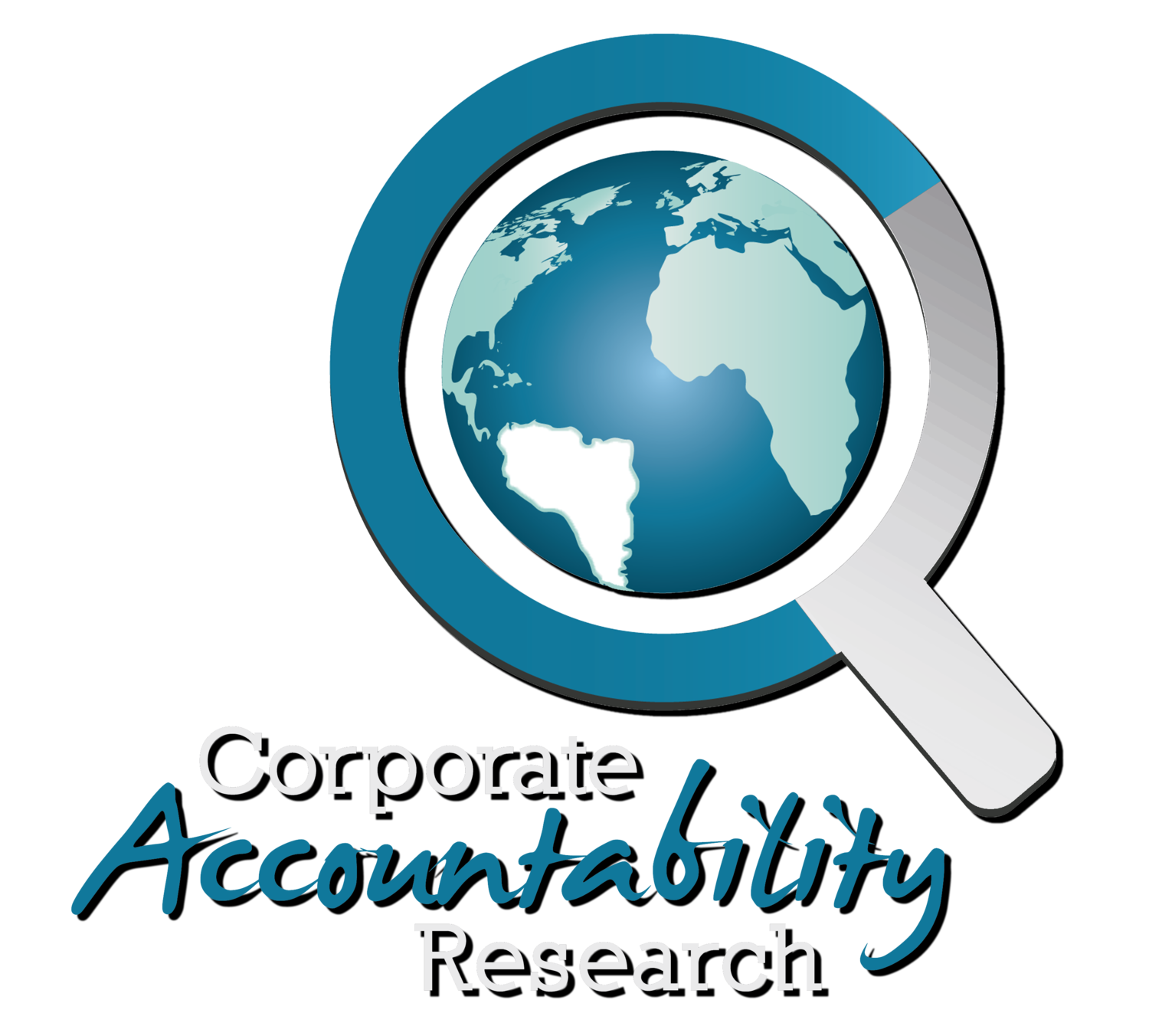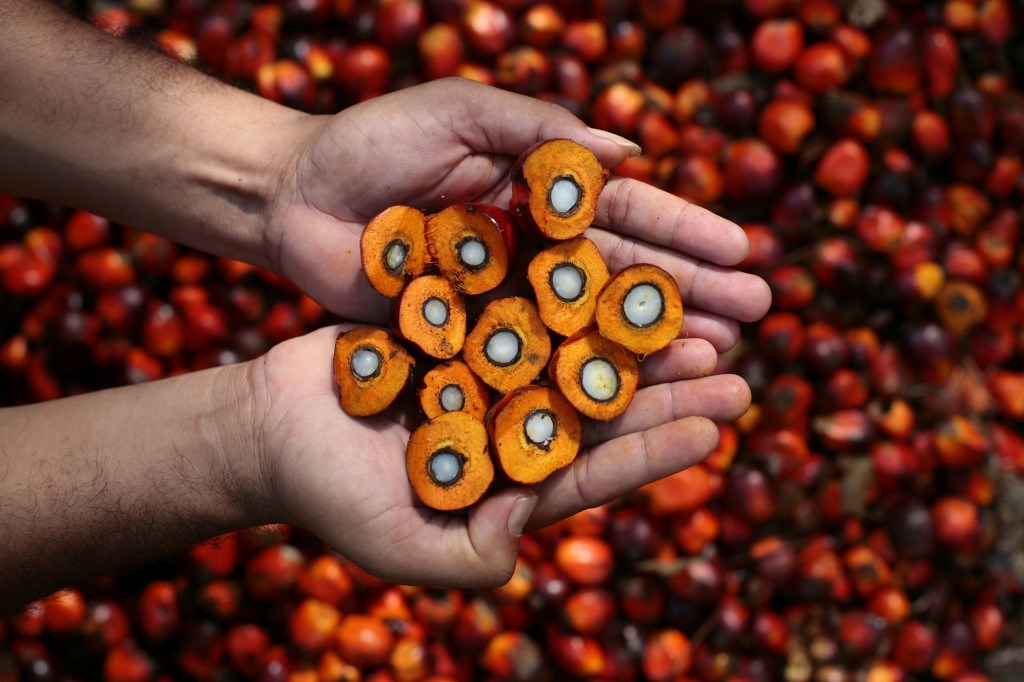The Compliance Advisor Ombudsman for IFC/MIGA
by DR samantha balaton-chrimes
The Office of the Compliance Advisor Ombudsman (CAO) for the International Finance Corporation (IFC) and Multilateral Investment Guarantee Agency (MIGA) (henceforth referred to as ‘CAO’), with respect to its contribution to human rights remedy in cases where aggrieved communities or workers make complaints to the CAO. The CAO is available to receive complaints regarding any project in which IFC or MIGA has financial involvement, provided there is a demonstrable connection to affected people, and the complaint concerns social or environmental concerns. The CAO has three separate functions:
Ombudsman/Dispute Resolution: a problem-solving / dispute resolution function – working with affected communities or workers and the relevant company
Compliance: conducts audits/investigations of IFC / MIGA’s own decision making
Advisor: provides advice to the IFC and MIGA about their policies in relation to environmental and social sustainability based on lessons learnt from handling cases.
This report draws on qualitative case studies of complaints made to the CAO about Wilmar (a palm oil company in Indonesia), PT Weda Bay Nickel (a nickel mining project in Indonesia), and a group of Indian tea companies. Overall, the CAO ultimately made little tangible difference to human rights outcomes in these cases. This is partly attributable to factors outside the CAO’s mandate and beyond the reach of its leverage, but also to operational decisions within the control of the CAO. This suggests there is some potential for the CAO to make a greater contribution to human rights remedy in its work. Though there was a lack of identifiable positive impact in the cases we studied, it is our assessment that, under certain circumstances, the general orientation and conduct of the CAO makes it one of the most promising of all available non-judicial grievance mechanisms at helping communities in meaningful ways. The CAO could become more effective at providing human rights remedy for people affected by IFC/MIGA supported projects if some changes are made to the its operations in line with the lessons raised in this report, and if communities and workers who use the CAO do so with clear information about its limitations, and strong civil society support.
An executive summary can be read below. To read it in Bahasa Indonesia please click here: Rangkuman Eksekutif
Executive Summary
This report draws on qualitative case study research to evaluate the Office of the Compliance Advisor Ombudsman (CAO) for the International Finance Corporation (IFC) and Multilateral Investment Guarantee Agency (MIGA) (henceforth referred to as ‘CAO’), with respect to its contribution to human rights remedy in cases where aggrieved communities or workers make complaints to the CAO.
The CAO is the recourse mechanism for projects supported by the IFC and MIGA. The CAO has three separate functions:
Ombudsman/Dispute Resolution: a problem-solving / dispute resolution function – working with affected communities or workers and the relevant company
Compliance: conducts audits/investigations of IFC / MIGA’s own decision making
Advisor: provides advice to the IFC and MIGA about their policies in relation to environmental and social sustainability based on lessons learnt from handling cases.
The CAO is available to receive complaints regarding any project in which IFC or MIGA have financial involvement, including via supply chains. Any individual, group or representative may make a complaint, provided they can demonstrate a connection to affected people.
The CAO does not consider itself a human rights remedy mechanism, instead presenting its remedial capacities to complainants in the form of dispute resolution. However, human rights are enshrined in the IFC Performance Standards, and many communities, workers and civil society organisations approach the CAO as a human rights mechanism, despite the CAO’s self-perception. It is also the only mechanism available to which complaints can be made about the IFC or MIGA’s human rights impacts. There is therefore value in assessing the CAO’s contribution to human rights remedy in its work.
The complaints
Our research involved qualitative field-based case studies of two sets of complaints made to the CAO, one about palm oil giant Wilmar, and one about PT Weda Bay Nickel mine, both in Indonesia, and a desk-based study of a third case in the Indian tea sector.
Wilmar: These complaints pertained to inadequate protection of land rights, livelihood transformations from forest-based to palm oil-dependent livelihoods, indigenous rights and, in one case, violence and intimidation of communities. They led to two compliance audits of IFC that found major non-compliances with IFC policy, and subsequently a World Bank Group framework for investing in palm oil. Mediations were undertaken at three sites, and agreements reached in two of those. The third collapsed when Wilmar sold its subsidiary plantation. The communities who reached agreements are struggling to make use of the agreed smallholding arrangements to improve their livelihoods.
Weda Bay: A consortium of environmental Non-Governmental Organisations (NGOs) made a complaint about the PT Weda Bay nickel mine in remote Halmahera on the basis that it would have widespread negative environmental and social consequences that were not fully considered or disclosed. In particular, two indigenous communities would be displaced. Affected communities were not willing to engage in an ombudsman-led problem-solving process because they feared for their safety if they were identified as ‘anti-mine’. The compliance team declined to conduct an audit, though our research found an audit could have generated positive impacts on human rights violations taking place in relation to land acquisition.
Tea: In the Indian tea sector, a complaint was made to the CAO in 2013 by NGOs representing workers suffering from labour rights violations in plantations in Assam. An assessment visit found that workers were reluctant to be named out of fear of reprisals, and the dispute resolution team eventually agreed to let NGOs (who were very well connected to workers) represent the workers. However, the company declined to participate. The complaint was then referred to the compliance team, where an investigation was already ongoing, having been instigated by the CAO Vice-President.
It is important to recognise that these individual cases cannot be interpreted as representative of the diverse array of cases handled by the CAO. This is particularly so given that the CAO’s operational guidelines and practices have evolved during the time of this research, particularly through new Operational Guidelines instigated after the Weda Bay and Wilmar cases, Where relevant and possible, we provide updated information on current CAO practices, but our analysis is anchored in our case studies. Furthermore, not all the CAO’s cases are as human-rights centred as these ones (for example many focus on environmental concerns). Nonetheless, our detailed investigation of these cases can shed useful light on the processes and mechanisms through which the CAO operated at the time of this research, and this analysis generates insights and questions of wider significance.
The difference made by the CAO
In the Wilmar case, the CAO mediation processes were well regarded by participants in two of the sites. However, the implementation of agreements was fraught with technical challenges that community groups struggled to overcome, meaning that the human rights concerns related to livelihood and poverty persist today. In the third site, Jambi, the CAO lost its leverage over the case when Wilmar sold its subsidiary, demonstrating the inherent limitations of voluntary processes. The communities in Jambi have been engaged in multiple conflicts with the company since, and have not had their demands met.
The most significant positive impact of the Wilmar case arose from the compliance audit released in 2009, and subsequent World Bank Group framework for palm oil, and the major changes in the way IFC screens palm oil projects for investment. The IFC has not made any investments in palm oil since the instigation of the framework in 2011. The IFC has also established an Advisory Services program to work towards more systematic improvements in social impacts of palm oil in Indonesia. However, at the time of writing, no results on the impacts of this program were available on the IFC website.
In Weda Bay, the CAO made no tangible difference to human rights issues. The ombudsman was unable to adequately protect the community complainants in a way that made them feel safe to participate and so no problem-solving process could take place. The compliance team decided not to conduct an audit of the IFC’s investment because the mine was in pre-construction phase and environmental and social assessments were still ongoing. However, this decision was a lost opportunity to generate information about land acquisition processes that were in violation of the IFC Performance Standards, and which would have been a fait accompli by the time the impact assessments were finalised.
In the Indian tea case, the inherent limitations of the voluntary nature of the dispute resolution process were again demonstrated when tea plantation companies declined to participate in a problem-solving process. The dispute resolution function thus had no tangible positive impact on human rights in this case either. Furthermore, the engagement of the CAO in the case led to unintended adverse impacts – beyond the control of the CAO – in the form of plantation management harassment and intimidation of workers and NGOs believed to be associated with the complaint. An investigation of the IFC’s investments in these tea companies was not yet public at the time of writing.
Factors influencing CAO effectiveness on human rights
Overall, the CAO ultimately made little tangible difference to human rights outcomes in these cases. This is partly attributable to factors outside the CAO’s mandate and beyond the reach of its leverage, but also to operational decisions within the control of the CAO and/or the IFC/MIGA. This suggests there is some potential for the CAO to make a greater contribution to human rights remedy in its work. Though there was a lack of identifiable positive impact in the cases we studied, it is our assessment that, under certain circumstances, the general orientation and conduct of the CAO makes it one of the most promising of all available non-judicial grievance mechanisms at helping communities in meaningful ways. The CAO could become more effective at providing human rights remedy for people affected by IFC/MIGA supported projects if some changes are made to the its operations and mandate in line with the lessons raised in this report, and if communities and workers who use the CAO do so with clear information about its limitations, and strong civil society support.
Factors positively affecting human rights outcomes
Our research found that certain aspects of the CAO’s operational guidelines and general orientation to complaints and social sustainability within the IFC/MIGA had significant potential to improve human rights outcomes, even though these were not always evident in the cases we studied. These included:
Accessibility: The CAO’s eligibility criteria and operational guidelines make it highly accessible. This is commendable and many of these guidelines should be widely replicated in other grievance mechanisms. Accessibility, however, is often highly dependent on NGO support. Though vulnerable groups are well served by the CAO’s mandate to instigate compliance processes in the absence of a complaint, the CAO could further improve accessibility for these groups by allowing NGOs to bring cases on their behalf without having to demonstrate a connection to communities (NGOs may be required to make a case for this exception and subsequent steps would need to be taken to ensure legitimacy).
Resourcing and professional practices: The CAO has a staff of highly qualified and experienced personnel, a network of local mediators and other experts to complement Washington-based staff, reflexive and consultative work practices, and high levels of resourcing that all contribute to its effective functioning.
Influence within the IFC/MIGA: The balance between institutional independence and influence in the CAO’s position vis-à-vis the IFC/MIGA has led to significant influence in some cases in the IFC’s operations, though there is room for improvement in the IFC/MIGA’s responses to CAO work.
Opportunities for enhanced operations
Our research also found that CAO’s effectiveness in leading to human rights remedy could be enhanced with some changes to its operations. Many of these recommendations amount to a deepening and enhancement of the CAO’s existing orientation to various operational matters, as expressed in its Operational Guidelines. Others would require changes to Operational Guidelines and/or the CAO’s mandate, as conferred by the World Bank Group. Users of the CAO can also learn from these lessons to make better use of the CAO to advance human rights outcomes.
Problem-solving versus human rights compliance
Problem solving as a mode of addressing human rights grievances can have some value in its remedial flexibility, for example by providing livelihoods, but it should not be conflated with human rights remedy. It does not, in practice, hold human rights as minimum standards in agreements and is better understood as a bargaining process. The CAO does not conceive of itself as a human rights mechanism, and should continue to work to manage expectations in this respect.
Remedies and their implementation
Secondly, though some solutions can be provided in problem-solving cases, these cases suggest those solutions can easily fall short of remedying the human rights harm, or positioning the affected community complainants to enjoy a secure livelihood and culture. There is potential to improve human rights compliance in problem-solving processes, and some changes in CAO operations could address this issue. The practical implications for this for problem-solving mechanisms are:
1. More consideration needs to be given to minimum standards for ‘solutions’ or ‘agreements’ so they comply with human rights norms. The CAO might consider introducing human rights standards as starting points for negotiations, and compliance checks on agreements to ensure they meet both the IFC Performance Standards and human rights norms.
2. More attention is needed to the long-term implementation of such agreements, and support for communities to make good use of them. In the Wilmar case this did not take place, but the CAO has provided this kind of support in other cases and should do so more often. Recent innovations in the IFC in the form of Project Level Action Plans show some promise here in extending the outcomes of CAO compliance work beyond internal changes in IFC/MIGA and more directly addressing the need for remedy.
For civil society and communities, the implications are:
1. Complainants should be proactive in any negotiations to propose minimum standards that are more likely to protect their rights, and to propose a compliance check on any agreements. Communities and their supporters should also try to ‘build in’ to any agreements long-term support for the implementation of remedies, and the possibility of renegotiation if the underlying grievances and/or human rights issues are not adequately resolved by the agreement.
Balancing power between parties
If problem-solving is deemed the best possible avenue for addressing human rights issues (for pragmatic reasons) balancing of power between parties is crucial, but is currently inadequate in CAO processes. The CAO is committed to both impartiality and to balancing power between parties in dispute resolution to facilitate fair outcomes. However, competing interpretations of impartiality influence the CAO’s operational decisions with respect to the two dimensions of power we focus on in this report: capacity and leverage. Impartiality can be interpreted variously as ‘having no position’, ‘being outside the dispute’, ‘being free from bias’ or being ‘fair’, meaning ensuring no undue advantage or disadvantage to either party. In our case studies, the CAO dispute resolution function privileged interpretations that relate to being ‘outside’ the dispute, while also trying to attend to interpretations that emphasise fairness and a freedom from bias or disadvantage. The imperative to keep companies engaged – an inherent part of the logic of a problem-solving approach – meant that approaches to capacity building and leverage erred on the side of ‘being outside the dispute’ and efforts to address power imbalances fell short.
Some more significant changes in the CAO’s approach could start to address this issue. The practical implications of this for the CAO are that:
1. More investment is required to equalise capacity of parties not only with respect to knowledge and skills relevant to the process of mediation (or other problem-solving processes), but also with respect to other needs that arise during mediation, such as technical skills and knowledge. The CAO could consider providing more direct capacity building for communities, and/or support and resources for civil society groups to conduct this difficult work.
2. More needs to be done to equalise leverage between parties in negotiations. Though many of the structural disadvantages communities face against businesses cannot be directly resolved, steps can be taken to mitigate this imbalance in leverage in problem-solving processes. Some possibilities for doing this include using standards and forms of evidence that favour communities to mitigate the current privileging of companies in legal and scientific forms of evidence; mitigating the vulnerability of communities by providing for their livelihood during problem-solving processes and taking all possible steps to ensure their safety; supporting communities to continually deal with internal disagreement and conflict so it cannot be used to divide them; allowing community and civil society mobilisation if the company is not meaningfully engaging in the process; and allowing NGOs to represent communities under certain circumstances.
For civil society and communities, the implications are twofold:
1. One of the most important roles civil society organisations can play is in the building of capacity for communities to make a complaint, navigate it, and then make use of any agreements through an implementation phase.
2. Strategic consideration needs to be given to ways to equalise leverage within negotiation processes. Learning from the experiences of groups have gone through mediation is critical.
Making more use of compliance
The compliance function is currently extremely limited in its impact on human rights remedy, but this need not be the case. Our research generated four lessons about the use of the compliance function in the CAO:
1. The impact of compliance investigations on human rights remedy could be enhanced by a greater willingness to conduct investigations, particularly in the early stages of projects, and particularly where land acquisition is at stake. This is possible within existing Operational Guidelines, partly via a more generous interpretation of what counts as ‘significant social or environmental’ impact.
2. The CAO should continue to monitor the IFC/MIGA’s responses to compliance investigations, and identify and utilise relationships and avenues of influence to encourage stronger responses.
3. The CAO’s current jurisdiction over project proponents is too limited. Where companies don’t engage in voluntary problem-solving through the dispute resolution function, there should be an option for them to be investigated directly by the Compliance function. This would require an extension of the CAO’s mandate.
4. Participatory project-level action plans as required responses to investigations (of both the IFC/MIGA and project proponents) could increase the impact of investigations on remedy. This would require changes in IFC/MIGA responsibilities.
5. Closer linking of compliance investigations with dispute resolution processes could increase the impact of investigations on remedy. This is theoretically possible within existing CAO Operational Guidelines, but would be a departure from usual practice.
6. A compliance investigation, and not just a compliance appraisal, should be triggered if safety concerns are the reason a dispute resolution process cannot be established or fails. This could be formalised in a change to the CAO Operational Guidelines, but is possible within existing Guidelines.
Impact on broader human rights fulfilment
Finally, there is some potential for the CAO to link local cases to systemic issues and advance systemic change on the human rights issues that arise in their caseload. However, this potential is highly contingent on relationships between all stakeholders, especially government, and on the willingness of the CAO to use those relationships to advocate for more programmatic responses to key issues. There are at least three practical implications of this for the CAO:
1. The CAO should continue to invest, as it already does to an extent, in building local relationships with local mediators and civil society groups. A combination of formalised structures for these relationships (such as the Roundtable on Sustainable Palm Oil (RSPO)), and informal networks, would enhance possibilities for translating lessons from individual cases to efforts to change sector-wide business practices and laws where necessary.
2. The CAO should continue to encourage the IFC, MIGA and World Bank Group to address the underlying drivers of human rights harms. The IFC Advisory Program on palm oil is a potentially good example of how this could work, although evidence of its impacts is not yet available.
3. The CAO could engage its advisory function more regularly, and engage more actively in civil society discussions about human rights issues, in addition to focussing on dispute resolution and directing advisory lessons predominantly inward to the IFC/MIGA.
For civil society and communities, the implications are that it is important to maintain and strengthen networks. Stronger networks can facilitate greater learning and advice sharing between communities engaged in grievances, and greater use of individual cases to advance bigger issues where appropriate.
Inherent limitations in addressing human rights harms
Our research also found that some fundamental conditions of the CAO’s operation generate significant limitations to its impact, but are beyond the control of the CAO. Specifically, lacking coercive powers, the CAO’s leverage to bring about changes in business behaviour is heavily conditioned by market conditions. This may partly explain an apparent reluctance on the part of the IFC/MIGA to draw on CAO work to exercise any more punitive forms of leverage for fear that it will drive businesses toward less demanding financiers. If a company chooses to disassociate from the IFC/MIGA (by selling subsidiaries or pre-paying loans), the CAO’s leverage is inherently limited.









